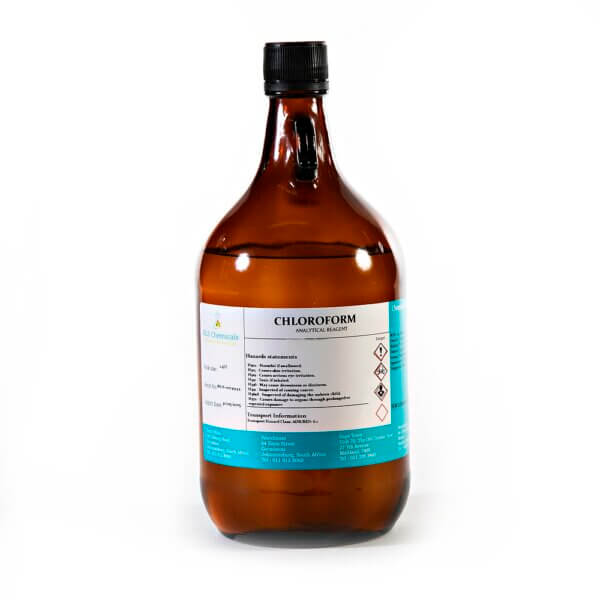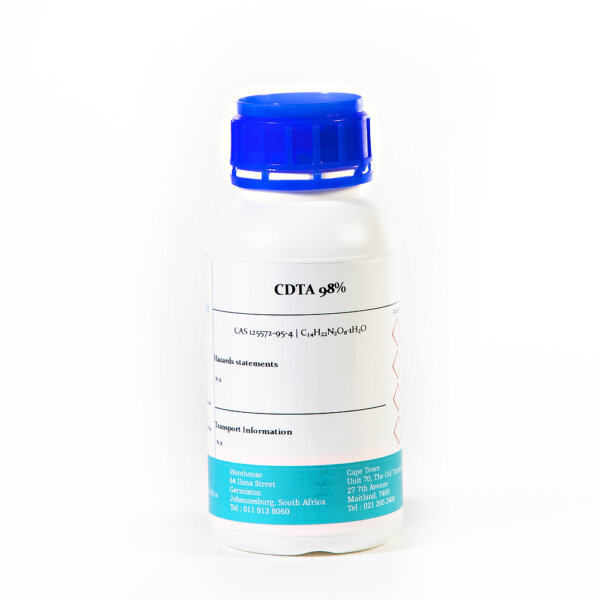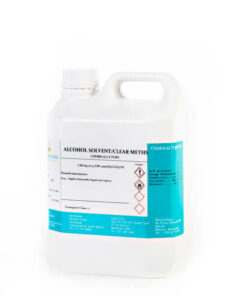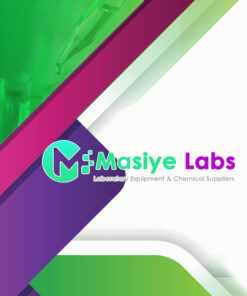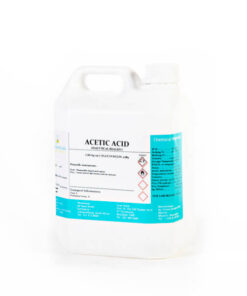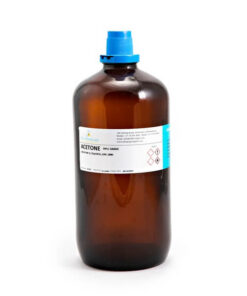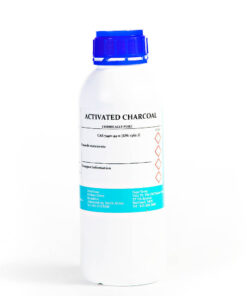Chloroform AR Glass Bottle – 2,5l
R919.51 Ex VAT
Chloroform AR Glass Bottle – 2,5l
Chloroform – when chlorine is used to disinfect water the by-product chloroform is formed. A nonflammable colourless liquid with a pleasant smell and a slightly sweet taste, chloroform is used in a number of industrial processes in multiple industries; building, paper and board industries as well as pesticide and film production. A substance that assists substances with dissolving, chloroform is often used as a solvent for lacquers, floor polishes, resins, adhesives, alkaloids, fats, oils and rubber as well as making Fluorocarbon22, a refrigerant. Be cautious when using chloroform as it can be harmful to the eyes, skin, liver, kidneys, and nervous system as well as toxic when inhaled or swallowed. Constant exposure to chloroform may cause cancer.
CAS Number: 67-66-3
Synonyms: Formyl Trichloride, Methane Trichloride, Trichloromethane
• Chemical Code: CHE-C15
• Chemical Name: Chloroform
• Chemical Grade: AR
• Chemical Formula: CHCl₃
• Chemical Weight: 119,38 g/mol
• CAS No: 67-66-3
• Chemical Synonyms: Trichloromethane, Methylidyne Trichloride
• Appearance: Colourless, highly refractive liquid
• Odour: Characteristic Odour
• Melting Point: -63 °C
• Boiling Point: 60,5 – 61,5 °C
• Vapour pressure: 213,3 hPa (20,0 °C)
• Relative density: 1,492 g/mL (25 °C)
• Chemical Grade: AR
• Chemical Formula: CHCl₃
• CAS No: 67-66-3
• Melting Point: -63 °C
• Boiling Point: 60,5 – 61,5 °C
Related products
Lab Chemicals
Lab Chemicals
Lab Chemicals
Lab Chemicals
Lab Chemicals
Lab Chemicals
Lab Chemicals
Lab Chemicals
